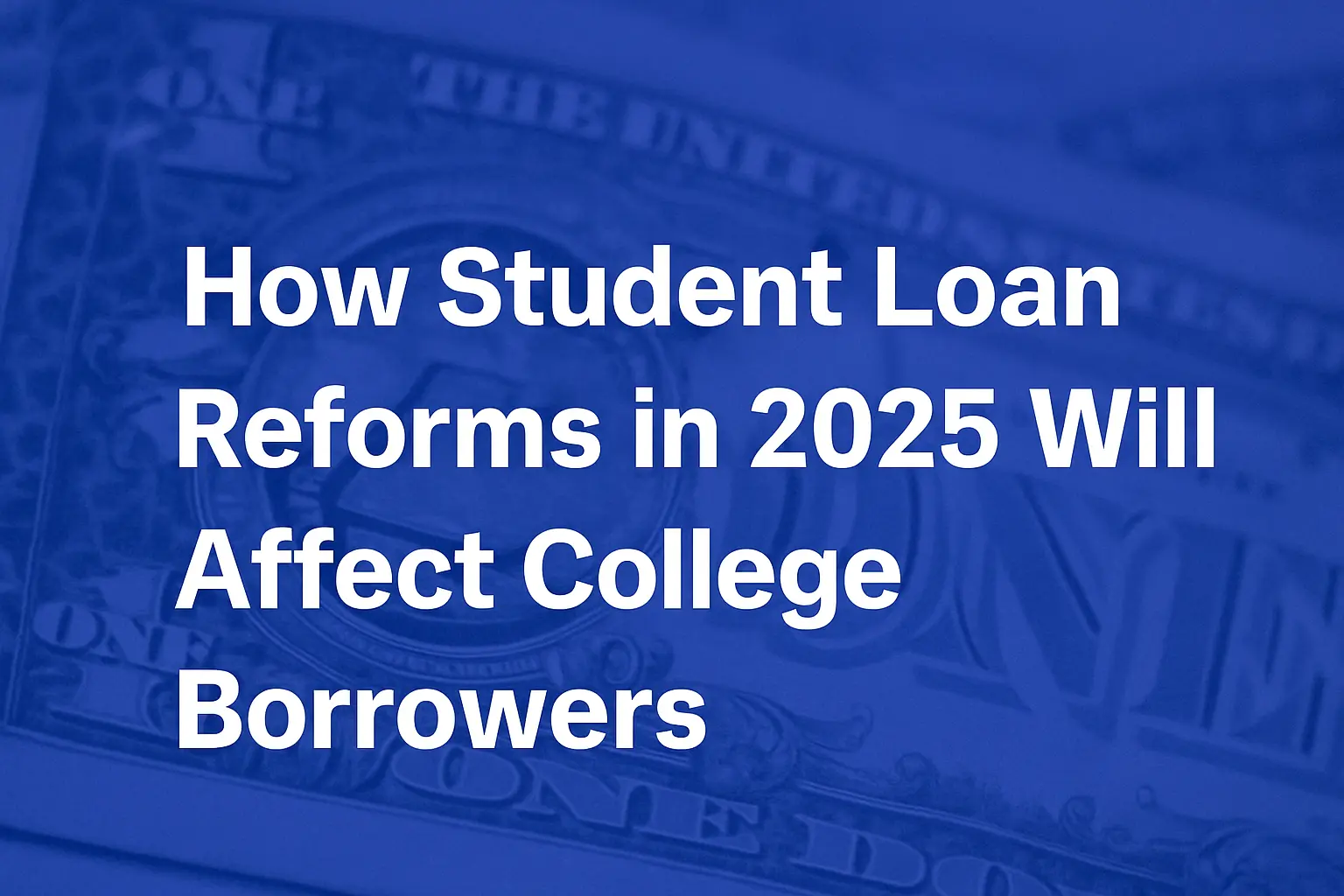Overview of Key Student Loan Reforms in 2025
In 2025, significant student loan reforms are reshaping the U.S. higher education finance landscape. Borrowers now face new rules on income-driven repayment (IDR) adjustments, accelerated pathways to forgiveness, revised interest rate frameworks, and revamped default risk mitigation systems. These changes aim to relieve financial pressure and enhance loan system fairness.
Expanded Income-Driven Repayment Plans: Relief Starts Earlier
Income-driven repayment plans are the most transformative component of the 2025 reforms. Essential reforms include:
- Lowered Repayment Thresholds – Payments now base on 10% of discretionary income, down from 12–15%, reducing monthly burdens.
- Faster Forgiveness Eligibility – Completing just 180 payments (15 years) becomes the default length for all IDR plans, replacing some 20-year terms.
- Retroactive Adjustments – Borrowers with prior payment history on IDR can receive refunds for overpayments, improving financial equity.
These shifts support faster progress toward forgiveness, as reported in recent MarketWatch analysis.
Interest Rate Reductions and Calculation Changes
Student loan reforms measures also target interest dynamics:
- Capped Interest at 3% for low-income borrowers, reducing cost accumulation.
- Recalibration Based on CPI – Rates now link directly to the Consumer Price Index, helping maintain a realistic, inflation-adjusted loan environment.
These alterations do more than cut interest—they help students manage rising costs without added fiscal stress.
New Safeguards Against Loan Default
Default prevention takes center stage with new policies:
- Grace Period Extensions – Delayed to nine months, allowing more time before default risk.
- Automatic Enrollment in IDR for Missed Payments – Borrowers missing a payment are auto-enrolled in IDR with protective measures.
- Fresh Start Programs – Borrowers who defaulted prior to 2025 may apply to reset repayment terms and recover eligibility for forgiveness.
These updates demonstrate a borrower-first approach to protecting credit and future loan access, aligning with MarketWatch insights on recent legislation.
Eliminating Balance Cap Barriers
A major reform: the elimination of loan balance caps in IDR forgiveness.
- Previously, fast forgiveness only applied to lower balances. Now, all borrower balances—regardless of size—are eligible after 180 qualifying payments.
- This move significantly benefits graduate and professional degree holders who face higher debt loads.
Simplified Application and Better Access
New tools and programs ease access to relief:
- Streamlined IDR Application – A unified, user-friendly portal for all federal student loan borrowers.
- Enhanced Pell Grant Integration – Pell recipients now receive priority IDR processing.
- Expanded Forgiveness Eligibility – More public service roles are now automatically recognized under Public Service Loan Forgiveness (PSLF) criteria.
Additionally, intuitive calculators help borrowers forecast payments and totals with precision.
Impact on Borrowers: What This Means for You
Student borrowers can now:
- Expect lower, more manageable monthly payments.
- Be eligible for loan forgiveness in as little as 15 years across all loan balances.
- Navigate repayment systems more easily with enhanced tools.
- Access immediate protections from default with new enrollment triggers.
PSLF and other forgiveness tracks now target a broader, more inclusive borrower base.
Recommended Steps for Borrowers Today
Check Your Plan – Switch to the best IDR plan for your income profile.
Review Your Timeline – New forgiveness timing starts as early as 2025.
Update Your Info – Link direct deposit, annual income, and employer changes ASAP.
Leverage Resources – Use student loan counseling or ombudsman services where needed.
Staying proactive ensures you benefit fully from these landmark student loan reforms.
Conclusion
The 2025 reforms usher in a pivotal era for student loan relief. With expanded IDR options, faster forgiveness, interest rate relief, and safer repayment paths, struggling borrowers finally gain a meaningful advantage.
These changes do more than address debt—they restore hope and financial control to students nationwide. It’s time to act—explore your options, secure your financial future, and join a more equitable lending landscape.
if you want to make that money work smarter for you, check out our Best Budgeting Apps for Students in 2025 to manage your earnings and save for the future.

